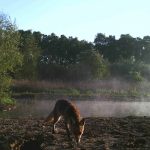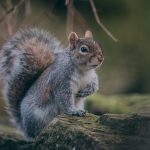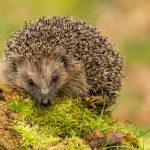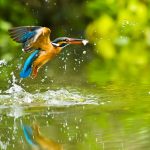Partners and collaborators
Conservation starts at home
That’s why we’re working to make the zoo, the surrounding land, and Cheshire region the best it possibly can be for both the species within the area but also those that will visit Cheshire as part of their life cycle.
It’s not just exotic species that are at risk of extinction, the biodiversity and ecosystems found right on our doorstep are also at risk. In fact, according to the State of Nature (2019) report, 41% of the species monitored have declined in abundance in the UK in the past 40 years. We rely on many UK species for our food and even the air we breathe. From tiny bugs to bigger mammals, they all contribute towards a healthy environment that is vital for our own survival.
To monitor and develop the perfect environment for multiple species, is a huge task, as each one requires a different type of habitat and approach to their conservation. Our zoo experts, together with the support of our partners and the public, are focused on the status of UK biodiversity and its importance in the wider ecosystem. It’s important to us to enhance and develop the zoo landscape, making it the best possible habitat not only for the exotic species that can be found here, but also the local wildlife.
Our AWARD WINNING Nature Reserve
Is already home to a wide range of incredible local and national wildlife, including kingfishers, hedgehogs and harvest mice. It is designated as a ‘Local Wildlife Site’ for the important plants, birds and invertebrates that live here – providing a protected habitat for vulnerable species, as well as a corridor of habitat that allows them to move through the landscape when they need to. Over the years, we have been monitoring the different species that use the Nature Reserve, including those that use it as a permanent home, as a feeding ground or even a place to breed.
We’ve seen the Nature Reserve transform from derelict green fields to seeing hundreds of species using it. This is as a result of the dedicated work of our Field Programme Coordinator – UK & Site Ecology, Helen Bradshaw, and the Chester Zoo Horticulture and Botany team, working together with our partners. Our experts have transformed land that has been used for agriculture into a more natural landscape that features wildlife flower meadows, ponds, trees and reedbeds, and connects to wetland along the canal.
Our Nature Reserve is also a place our visitors can enjoy and connect with nature. It is also a space that inspires visitors to take action – whether at home in their own garden, school yard or local green space.
Beyond the Nature Reserve, surrounding the zoo, are many small fields with hedgerows that act as important corridors for wildlife. The reserve and zoo site also feeds into wildlife corridors across Cheshire.
Within the zoo grounds, our horticulturists work to enhance the landscape of the zoo, not only to enrich the visitor experience, but so local wildlife can thrive. There are a number of specialist gardens and spaces across the zoo, including flower rich areas for pollinators and a bumblebee garden. The team manage two colonies of black bees, which are managed in a natural and ‘bee-friendly’ way with minimum intervention, for their role as pollinators rather than suppliers of honey. The botany team also work behind the scenes at the zoo, in our state-of-the-art greenhouses, propagating a number of endangered species of plants, endemic to the North West region, that are in decline or have disappeared due to habitat loss, for reintroducing them back into our landscapes. Including over 2000 common barberry plants to help rescue populations of the threatened barberry carpet moth.
The surveys we carry out on site each year, provide evidence of changes in biodiversity using the site and highlights the presence of any species of conservation concern. These surveys also help in informing future site management decisions.
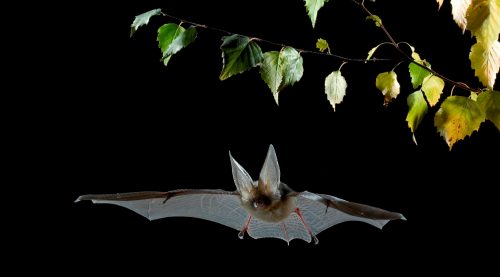
These results aren’t just important for the Cheshire region, but they also contribute to providing insight on a national level, by highlighting trends across the UK and providing vital information that enables conservationists to look at a species as a whole – informing the State of Nature report. Through monitoring we’ve discovered rare species that have never been recorded in Cheshire before!
WILDLIFE CONNECTIONS
It’s also important to engage our visitors and local communities within the region, educating and upskilling people to then take action in their area which contributes towards the wider aims of protecting UK wildlife. Our Wildlife Connections campaign brings people together to create safe spaces for UK wildlife by creating connections from one wildlife-friendly space to the next. Without the involvement of people we can’t create vital wildlife corridors and protect the precious wildlife that we love.
In addition to the work we are doing on the zoo land, we are also working with the Government, parliamentarians and sector colleagues to ensure the Government’s Environmental Bill long term plans and targets are scientifically based and legally binding. As well as working closely with our local MPs to raise the issue with the government to be more ambitious in protecting UK wildlife and nature.
Conservation really does start at home. Together we can make a huge difference to preventing extinction right here in the UK and there are many ways you can help too!
NOW is the time to ACT FOR WILDLIFE. Conservation is CRITICAL; species are under threat. TOGETHER we can make a BIG difference. Take action TODAY and join us in PREVENTING EXTINCTION.
OUR TEAM OF EXPERTS WORK IN SIX REGIONS AROUND THE GLOBE – REPRESENTING SOME OF THE PLANET’S MOST BIODIVERSE HABITATS. Discover more about our SCIENCE AND CONSERVATION work.



